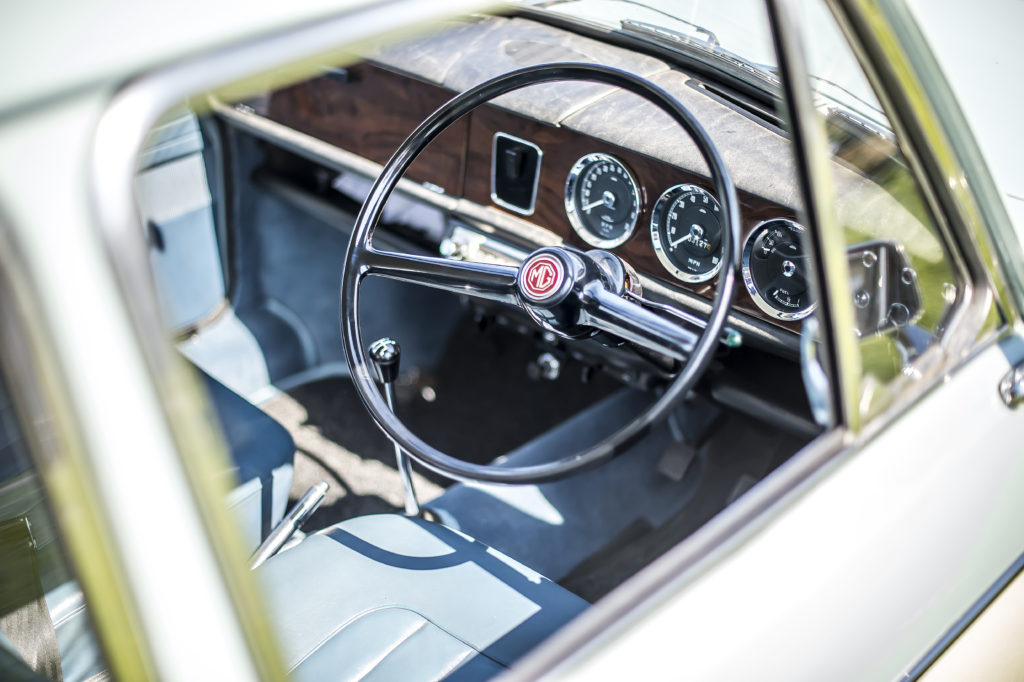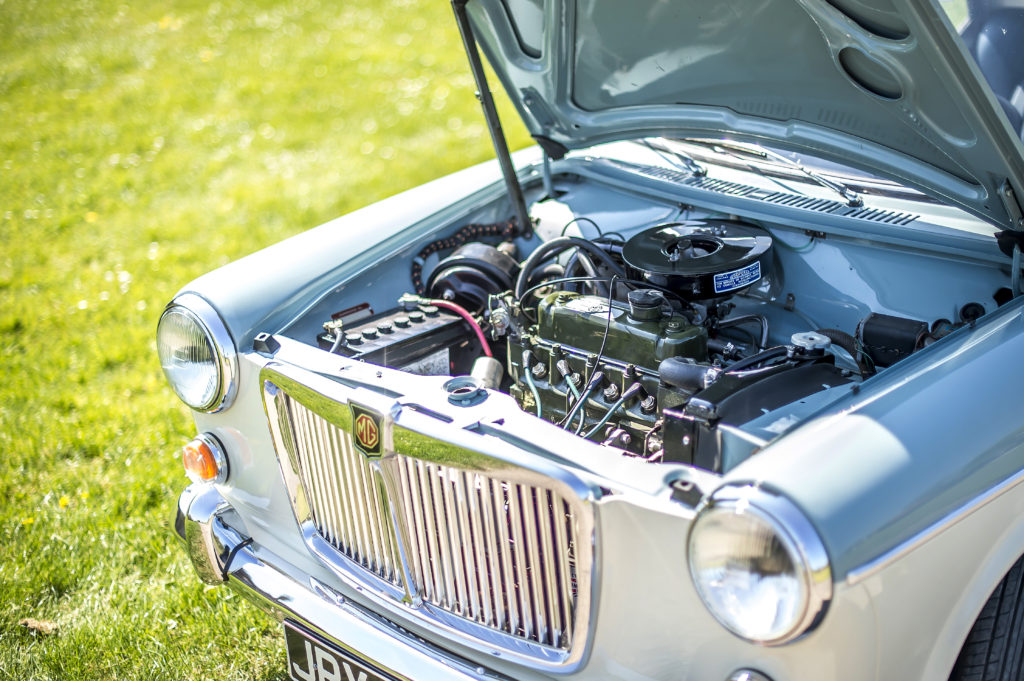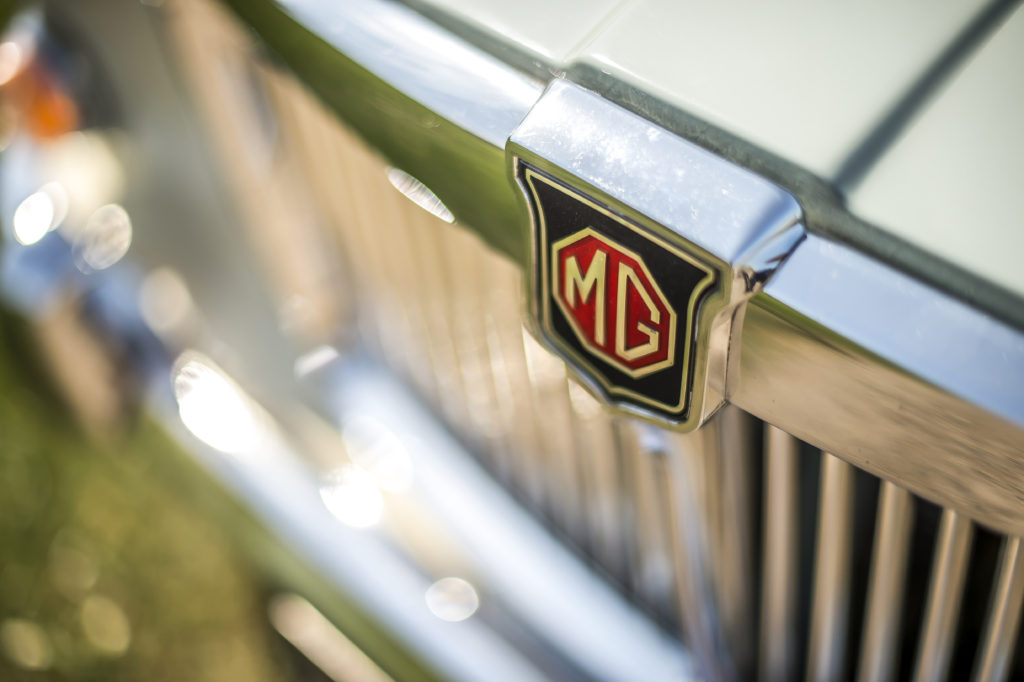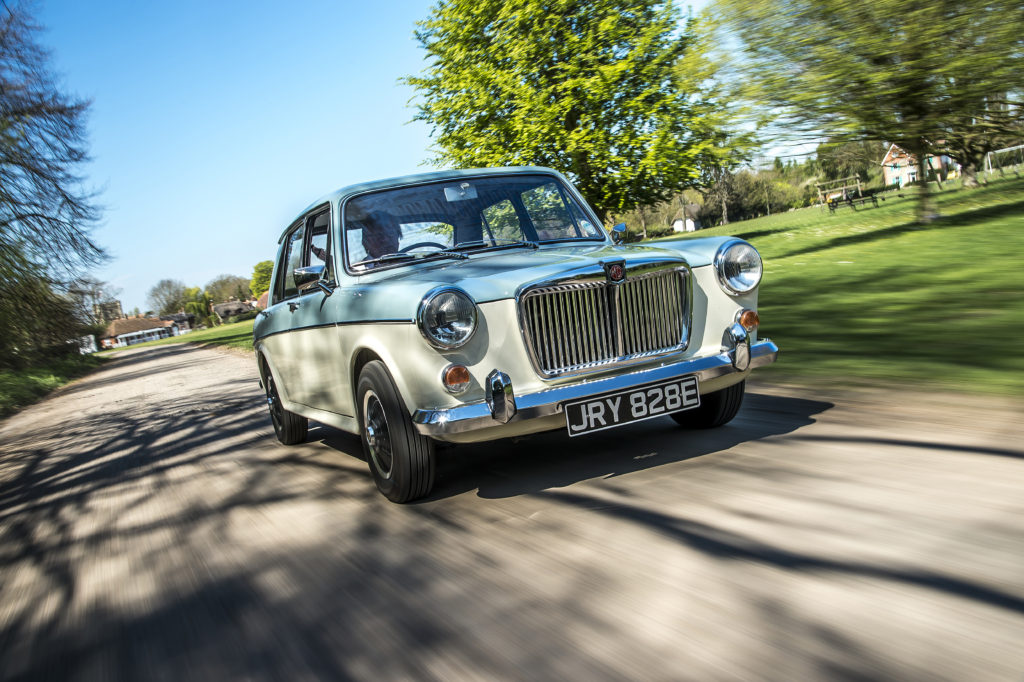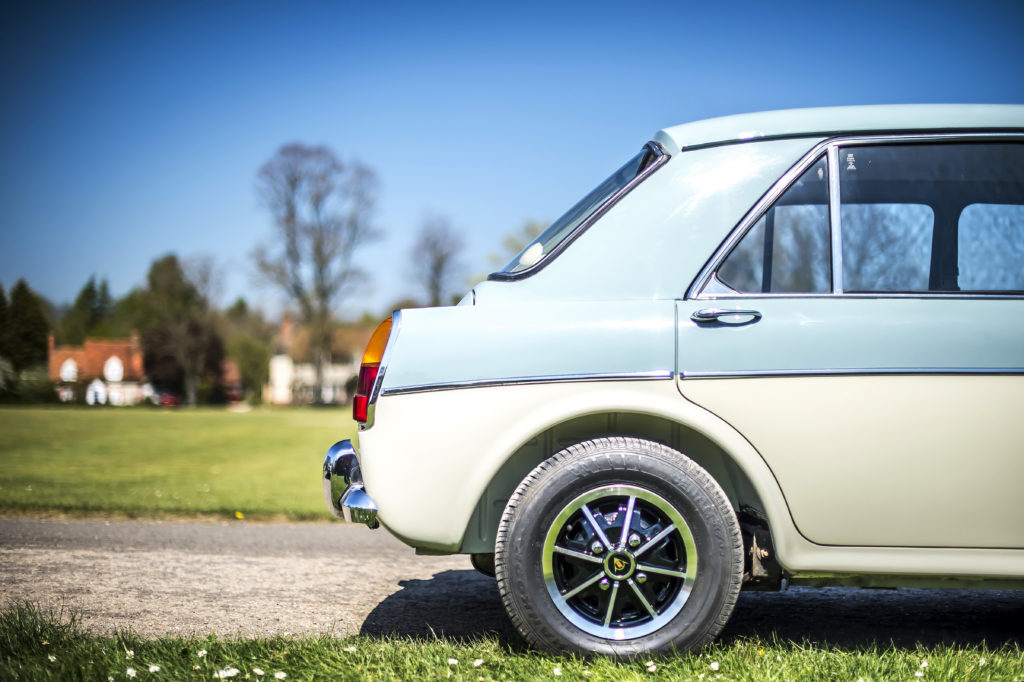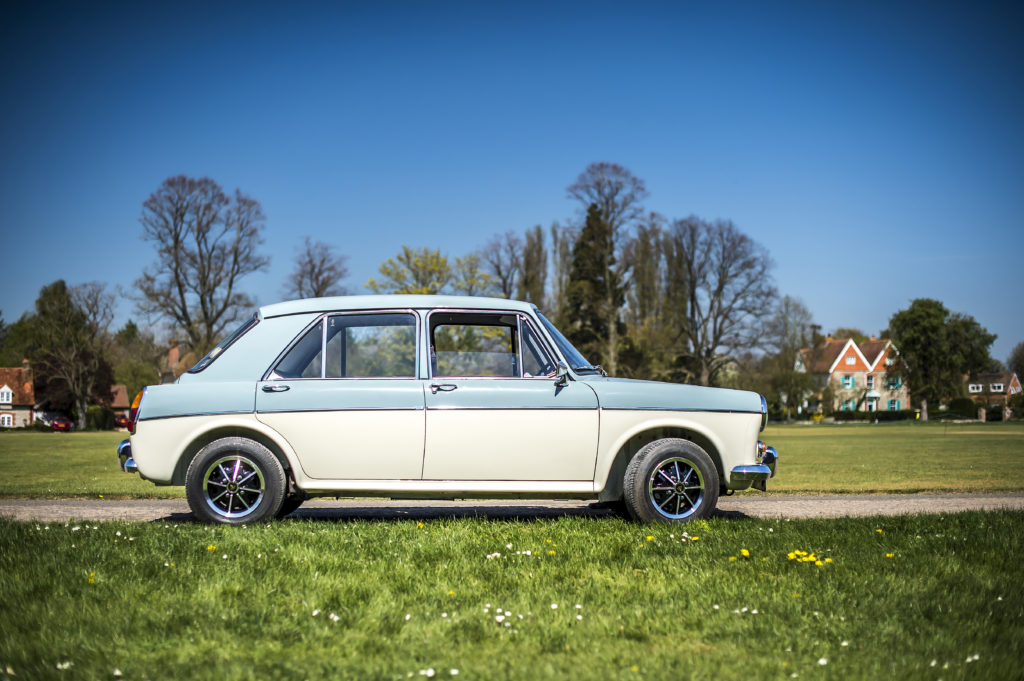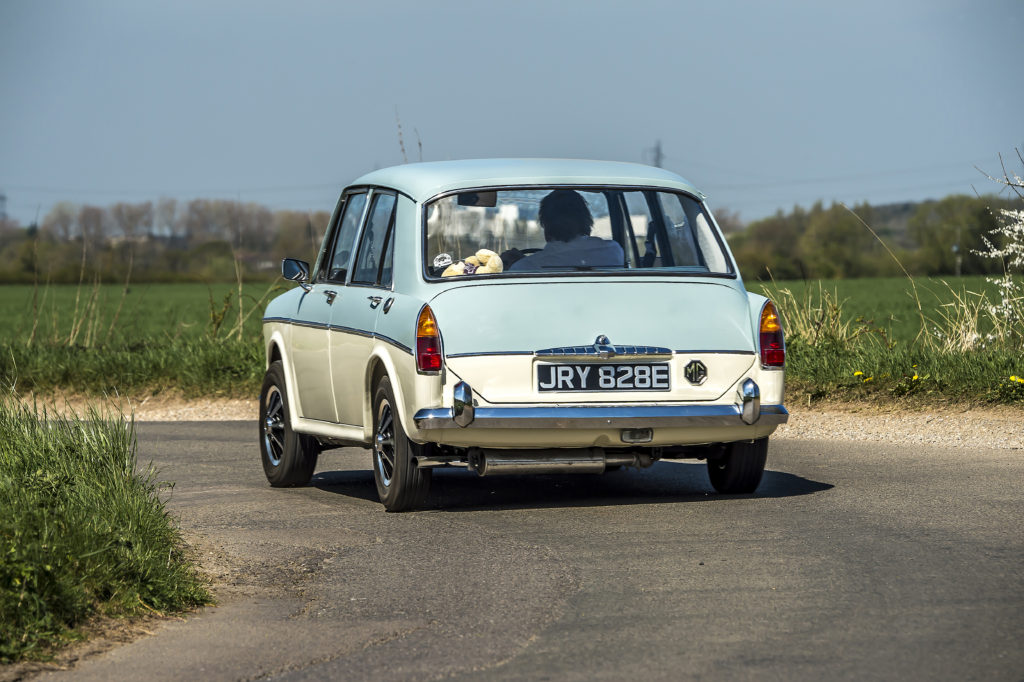An MG for all the family
By Adam Sloman
Photos courtesy of Auto Bild Magazine
Small cars became big business in the 1960s and as BMC prepared to launch its follow-up to the all-conquering Mini, MG was naturally in the mix.
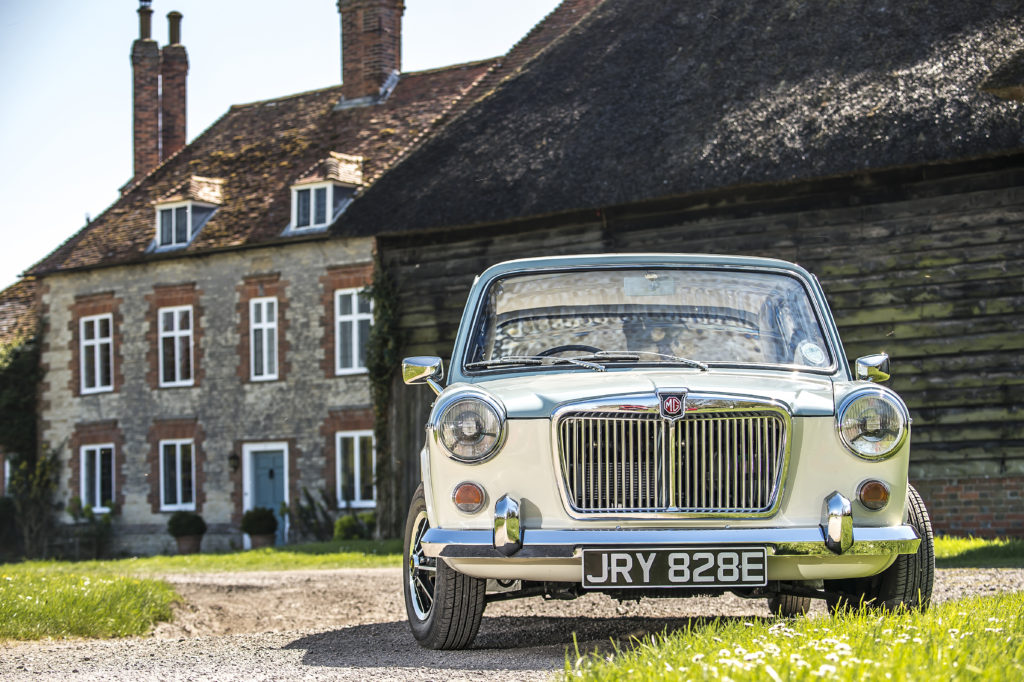
The arrival of the Mini in 1959 changed the way small cars were perceived. Created by BMC after an edict from Leonard Lord to take microcars and bubble cars off the streets, the Mini offered everything you would expect from a ‘proper’ car, albeit in a much smaller package.
Fast forward three years to 1962 and the Mini had become an established and popular choice in Britain and Europe – fears in the trade about the Mini’s revolutionary transverse engine set-up had quickly been calmed as in practice the Mini was easy to work on, both for garages and dealerships, but also for the home mechanic.
BMC and Sir Alec Issigonis had created something special with the Mini, and with this success still fresh in his mind, he set out to create something bigger, more innovative, and more sophisticated.
Acting as a successor for the Austin A40, the car codenamed ‘ADO16’ would launch in August 1962 as the Morris 1100, but in the brave new world of the British Motor Corporation, variants of the ADO16 would wear almost every nameplate from the company’s stable.
The first variant after the Morris (and arguably the most important for the likes of us) came just over a month later, at the end of September 1962 with the launch of the MG 1100.
An MG from Oxford
Unlike the rest of the MG range at the time, the 1100 would be built at nearby Cowley, sharing production with the Morris version of the car.
Priced at £758 for the two-door and £812 for the four-door (including purchase tax), the MG gained a traditionally styled chrome grille, not dissimilar to that found on the larger Farina Magnette, chrome stripes running the length of the car and circular indicators and sidelights. The MG would be offered in a choice of eight colours and in a move that drew further similarities with the Magnette, was offered in seven different ‘duotone’ finishes, allowing customers to choose a variety of colour combinations.
Under the bonnet, the MG gained twin SU carburettors, and developed 55bhp, giving a top speed of 85mph and a 0-60 time of 18.4 seconds.
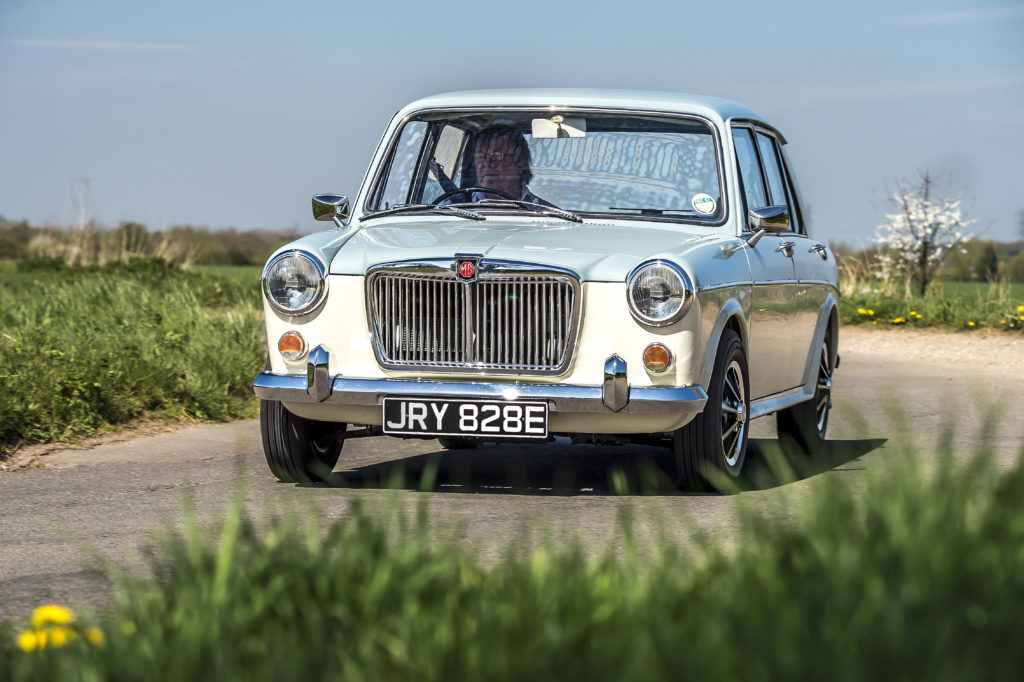
Inside, the MG was equipped with a full-length walnut dashboard with glovebox (something absent on the Morris, which made do with a more utilitarian storage pocket) and a new strip speedo that was also home to the fuel and temperature gauges.
Innovative things come in small packages…
The 1100 took everything that made the Mini so popular and added two things that were arguably at a premium in the smaller car – space and comfort. A family of four could happily tackle even the longest journey in the 1100, with extra space for luggage, all while riding on the ‘magic carpet’ of hydrolastic suspension.
Hydrolastic had originally been intended for the Mini, only for BMC’s accountants to deem the system too expensive, and while it did briefly see application in the Mini, it was on the AD016 that it became best known.
Developed by Dr Alex Moulton, the system swapped traditional springs and dampers in favour of more space-efficient displacers, connected by pipes running the length of the vehicle. Similar to systems employed by the likes of Citroen, but was simpler in its implementation, but gave it genuine ‘big car comfort.
The 1100 range underlined BMC’s credentials as a technically innovative manufacturer – the use of a transversely mounted engine with front wheel drive made the car incredibly space efficient, just like the Mini, and the addition of hydrolastic suspension gave BMC another big technological advance to promote the car with.
Autocar put the car through its paces and was quick to praise the car: “Impressive though the straight-line performance may be, it is on corners where the MG comes into its own. On dry roads, the car could be hurtled through the bends at almost incredible speeds with almost no qualms.” High praise indeed. They were less complimentary about the interior, including the dash which they suggested had a finish “more suited to a kitchen dresser.”
They concluded their test by underlining the MG’s technical excellence, calling the car “difficult to fault” and stating that road-holding and ride comfort were in a class of their own. Their closing statement summed up the thoughts of any MG 1100 owner – “Even the most ardent, dyed-in-the-wool MG enthusiast would deem the 1100 a very worthy bearer of the Octagon.”
With Britain’s continuing export drive, and the popularity of MG in the USA, it should come as little surprise that the 1100 would arrive stateside, a few months after the UK launch, in late 1962 at the MG Sports Sedan. It launched as the two-door, soon followed by the four-door version.
Overseas success
Like other MG products, it sold well in the US and so BMC followed it with an MG-badged version of the luxurious Vanden Plas 1100, dubbed the MG Princess 1100. Just over 150 MG Princess 1100s were built and in 1968 both the MG Sports Sedan and MG Princess 1100 were dropped from the US market to make way for the patriotically-named Austin America.
BMC found themselves with a genuine sales success on its hands – the car went toe-to-toe with the Ford Cortina and for almost a decade was Britain’s best-selling car and ADO16s were on every street corner.
The summer of 1967 saw the 1275cc A-series find a home in the car, and so the MG 1300 was born. Early cars boasted little improvement in power over the 1100, with 58bhp, but by the time the mk2 model arrived in 1968, power increased to 65bhp, lowering the 0-60 to 17.3 seconds.
The strip speedo made way for a simpler, three-clock set up that was similar to the other members of the ADO16 family. As well as the larger engine, the 1300 saw the end of the four-door MG, with the two-door body style being offered through until autumn 1971, when the range was simplified for the 1972 model year.
The arrival of the 1300 GT had eroded the MG’s place as ‘the sporty one’ in the ADO16 family and by the dawn of the 70s its time was done.
Over 116,000 MG 1100s and MG 1300s were built between 1962 and 1971, but despite its sales success the MG 1100 and 1300, and indeed all the members of the ADO16, are relatively rare today.
A perfect storm of rust-prone bodyshells and relatively complex construction compared to the Mini made it a tougher car to repair and keep on the road, and those ever-popular 1098cc and 1275cc A-series engines were a popular, low-cost option for Mini owners looking for a Cooper-esque boost in performance.
Why no MG Mini?
Legend has it that BMC did indeed consider an MG version of the Mini, in the same vein as the Riley Elf and Wolseley Hornet. David Knowles’ excellent book MG: The Untold Story expands the story. The variant, based on a standard Mini saloon was costed by BMC in 1961 and a single running prototype, based on a Morris Mini Minor, was built. The incredible success of the Mini Cooper put paid to any need for any other sporting Minis, and the project was shelved. The alleged prototype did survive for some time, but its fate today remains unknown.
The unusual combination of standard Mini saloon and upmarket styling did see the market eventually – South Africa saw the Wolseley 1000 arrive in 1967, combining the Hornet nose with the Mini saloon’s rear. Less than 500 were produced before the model was discontinued in 1969.
No race on Sunday, still sell on Monday
With the likes of the Mini, MGB and Austin Healey dominating BMCs Competitions programme, there was no room for the 1100 and 1300 at the famous Abingdon Works. That said, an MG 1100 did contest the Monte Carlo Rally, driven by Tomorrow’s World host Raymond Baxter. The MG’s biggest success on the track came in 1962 when Andrew Hedges and Alan Foster won the 1300 class in the Brands Hatch Six Hour race. Supported with input from Stuart Turner, the MG completed 157 laps of Brands just weeks after the car had gone on sale.

 MG Car Club
MG Car Club